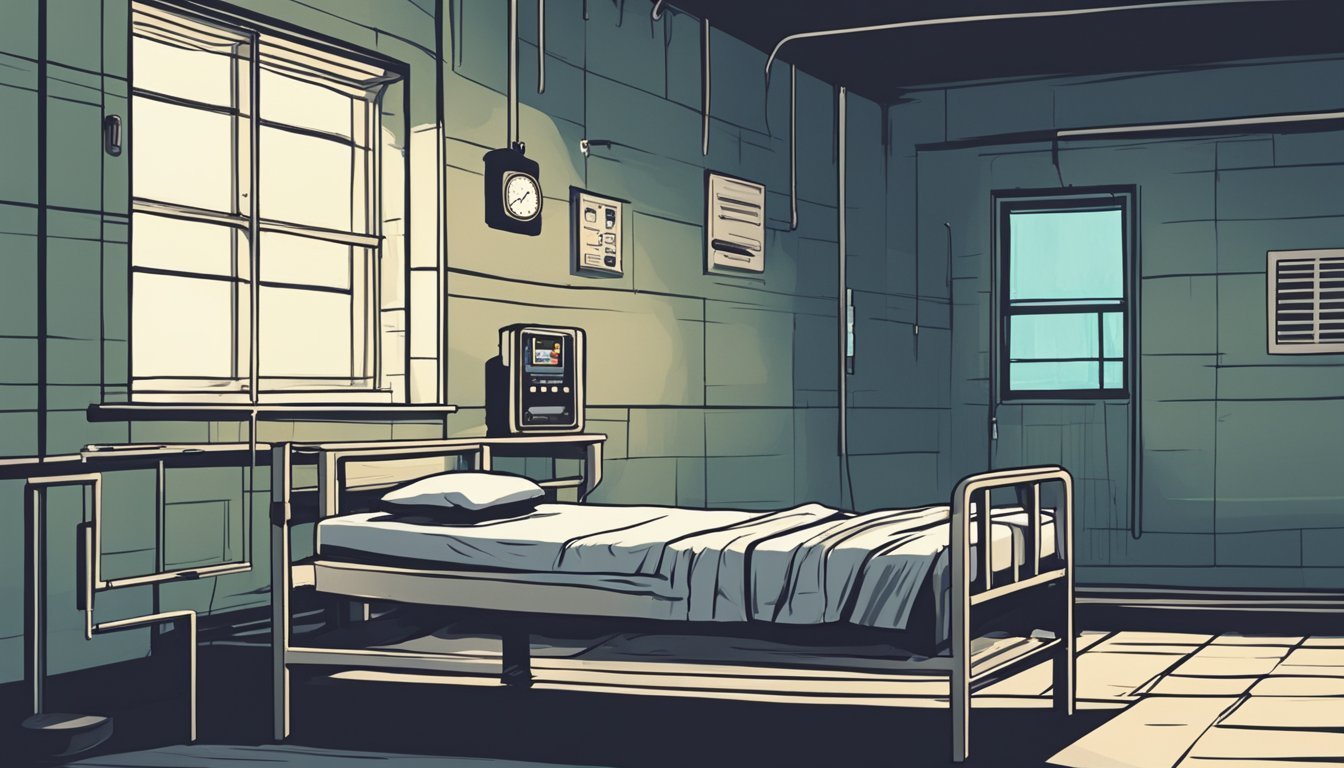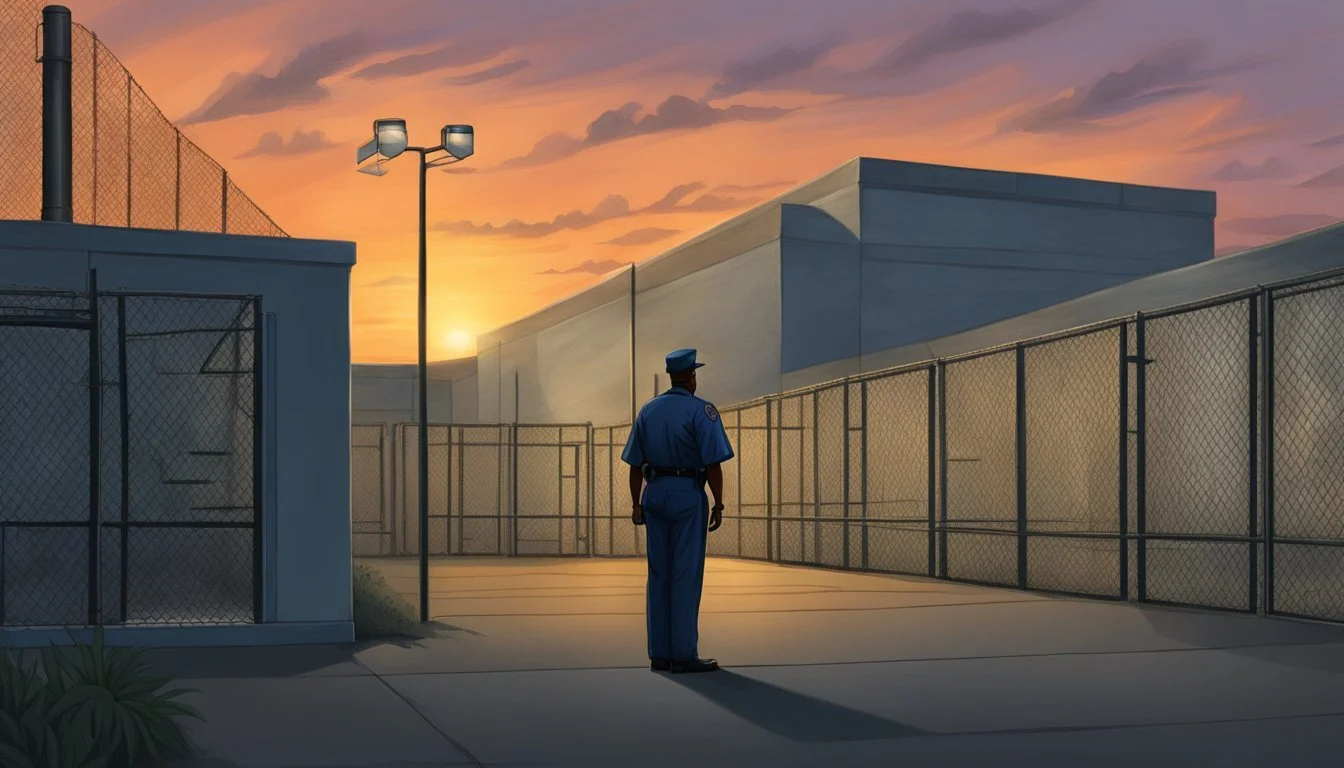William Darrell Lindsey's Florida Farewell: Killer's Death Row Heart Attack Ends Decades-Long Saga
William Darrell Lindsey, known as "Crazy Bill," was a notorious serial killer who terrorized Florida and North Carolina in the 1980s and 1990s. His reign of terror came to an abrupt end when he was apprehended in 1996, leading to his eventual conviction for multiple murders.
Lindsey's criminal career ended with a 30-year prison sentence in Florida, where he admitted to killing six women in St. Augustine and one in Asheville, North Carolina. The serial killer's life behind bars was short-lived, as he died of a heart attack on April 17, 2001, just two years into his incarceration.
Lindsey's case shocked the communities where he operated, leaving a lasting impact on the victims' families and law enforcement agencies involved in his capture. His death in prison marked the final chapter in a dark period of Florida's criminal history, bringing closure to some while leaving questions unanswered for others.
Background: The Life of William Darrell Lindsey
William Darrell Lindsey, born on May 18, 1935, in St. Augustine, Florida, led a troubled life that culminated in a series of heinous crimes. His early years and criminal record provide insight into the factors that may have shaped his violent behavior.
Early Years and Childhood
Lindsey grew up in St. Augustine, where he gained the nickname "Crazy Bill" early in life. His childhood was marked by instability and potential trauma, though specific details remain scarce. He attended local schools but struggled to fit in with his peers.
As a teenager, Lindsey exhibited antisocial tendencies and had difficulty maintaining relationships. His behavior became increasingly erratic, raising concerns among family members and neighbors. Despite these red flags, little intervention appears to have taken place during his formative years.
Criminal Record and Prior Convictions
Lindsey's criminal activities began well before his serial killings. He amassed a record of petty crimes and misdemeanors in his young adult years. These offenses included theft, public intoxication, and assault.
By the 1970s, Lindsey's criminal behavior had escalated. He served time for armed robbery and was suspected in several unsolved assaults. Law enforcement in St. Augustine began to view him as a habitual offender.
His pattern of violence against women emerged during this period. Several missing persons cases in the area were later linked to Lindsey, though concrete evidence was initially lacking. This gap in connecting him to more serious crimes allowed his activities to continue unchecked for years.
Chronology of Crimes
William Darrell Lindsey's criminal activities spanned over a decade, leaving a trail of victims across Florida. His murders, arrest, and subsequent legal proceedings unfolded in a series of events that shocked communities.
The Florida Murders
Lindsey's killing spree began in the early 1980s in St. Augustine, Florida. He targeted vulnerable women, often those involved in sex work or struggling with addiction.
In 1983, Lindsey committed his first known murder. Over the next 13 years, he killed at least six women in Florida. His victims included:
Lashawna Streeter
Cheryl Lucas
Diana Richardson
Donetha Snead
Anita Stevens
Jackie Dupree
Lindsey's method of operation typically involved strangulation. He disposed of his victims' bodies in remote areas, making their discovery challenging for law enforcement.
Investigation and Arrest
For years, Lindsey's crimes went undetected. Local authorities struggled to connect the dots between the various murders.
The breakthrough came in 1996. Lindsey was arrested in Asheville, North Carolina, on suspicion of murdering Lela Johnson. This arrest led investigators to re-examine unsolved cases in Florida.
DNA evidence played a crucial role in linking Lindsey to multiple murders. Advances in forensic technology allowed authorities to match Lindsey's DNA to evidence found at several crime scenes.
As the investigation progressed, detectives interviewed Lindsey's acquaintances and family members. These interviews provided valuable insights into his movements and behavior over the years.
Trial and Conviction
Lindsey faced charges for multiple murders across different jurisdictions. Prosecutors built a strong case against him, relying on DNA evidence and witness testimonies.
In 1999, Lindsey agreed to a plea deal. He pleaded guilty to six murders in Florida to avoid the death penalty. The court sentenced him to 30 years in prison.
During the trial, victims' families finally had the opportunity to confront Lindsey. Many expressed relief at the closure but also anger at the years of uncertainty and grief they had endured.
Lindsey's conviction brought an end to his reign of terror. However, investigators believed he might have been responsible for additional unsolved murders in the region.
Legal Proceedings
William Darrell Lindsey faced severe consequences for his crimes. His case involved complex legal processes, including sentencing hearings and time on death row.
Sentencing and Appeals
Lindsey received a 30-year sentence in Florida after pleading guilty to six murders as part of a plea deal. This agreement spared him from the death penalty. The sentencing guidelines for multiple homicides typically call for harsher punishments, but prosecutors likely considered factors such as Lindsey's cooperation and the closure it brought to victims' families.
Lindsey's legal team filed appeals, arguing cruel and unusual punishment under the Eighth Amendment. These attempts were unsuccessful. The U.S. Supreme Court declined to hear his case, effectively upholding the original sentence.
Life on Death Row
Despite avoiding execution, Lindsey spent his final years in a high-security prison environment. He was held in conditions similar to death row inmates due to the severity of his crimes. Prison records show he had limited contact with the outside world and faced strict daily routines.
Lindsey's health deteriorated during his incarceration. He received medical care within the prison system, but his access to specialized treatments was restricted. On April 17, 2001, Lindsey died of a heart attack while serving his sentence, never having the chance for parole or release.
Impact and Reactions
William Darrell Lindsey's death and the revelation of his crimes sent shockwaves through Florida communities. The case left a lasting impact on victims' families and garnered significant media attention.
Victims' Families and Community
The families of Lindsey's victims experienced a complex mix of emotions upon learning of his death. Many expressed relief that he could no longer harm others, but also frustration that he escaped full justice. Some family members spoke to the Tampa Bay Times, describing their ongoing grief and the challenges of finding closure.
The St. Augustine community, where several murders occurred, held memorial services for the victims. Local support groups formed to assist those affected by Lindsey's crimes.
Media Coverage and Public Perception
Lindsey's case received extensive coverage in Florida newspapers and national true crime publications. The Tampa Bay Times ran a series of in-depth articles exploring his criminal history and the investigation that led to his capture.
Public reaction was largely one of shock and disbelief. Many struggled to reconcile Lindsey's outwardly normal appearance with his violent acts. The case prompted discussions about public safety and the need for improved methods to identify and apprehend serial offenders.
Documentaries and books about Lindsey's crimes emerged in the years following his death, further cementing his notoriety in true crime circles.
Controversies and Legal Debates
William Darrell Lindsey's case sparked debates about capital punishment and rehabilitation in the criminal justice system. Legal experts and advocates raised questions about the effectiveness of lengthy prison sentences and the possibility of reform.
Capital Punishment and the Justice System
Lindsey's crimes reignited discussions on the death penalty. Prosecutors sought capital punishment, arguing the severity of his murders warranted execution. Defense attorneys countered that life imprisonment was a sufficient penalty. The case highlighted the complexities of sentencing in serial killer trials.
Some victims' families pushed for the death penalty, while others opposed it on moral grounds. Legal scholars debated whether capital punishment truly served as a deterrent for such heinous crimes.
Issues of Rehabilitation and Parole
Lindsey's case raised concerns about the rehabilitative potential of violent offenders. Mental health experts questioned if extended prison terms could effectively reform serial killers. Some argued for increased focus on psychological treatment and behavioral interventions.
The possibility of parole for such offenders became a contentious issue. Victims' rights groups advocated for stricter parole guidelines, fearing the release of dangerous individuals. Others pushed for a more individualized approach to assessing rehabilitation progress.
Debate centered on the appropriate minimum sentence for multiple murders. Lawmakers grappled with balancing public safety concerns against the high costs of long-term incarceration.
Final Moments and Legacy
William Darrell Lindsey's life ended abruptly while incarcerated. His death sparked discussions about the justice system and the fate of serial killers behind bars.
Death on Death Row
Lindsey died on April 17, 2001, while serving his 30-year sentence in a Florida prison. He suffered a fatal heart attack at the age of 65. The serial killer had spent less than two years incarcerated before his unexpected demise.
His death on death row cut short the full term of his punishment. Some victims' families expressed frustration at the brevity of his time behind bars. Others felt a sense of closure, knowing Lindsey would never harm anyone again.
Posthumous Discussions
Lindsey's case reignited debates about the effectiveness of life sentences versus the death penalty. Critics argued that his early death demonstrated the unpredictability of life terms for aging offenders.
Law enforcement continued investigating cold cases potentially linked to Lindsey. His death complicated efforts to solve these crimes, as he could no longer be questioned or provide DNA samples.
The media revisited Lindsey's crimes, exploring the impact on survivors and the communities he terrorized. Documentaries and books examined his motives and the investigative process that led to his capture.







